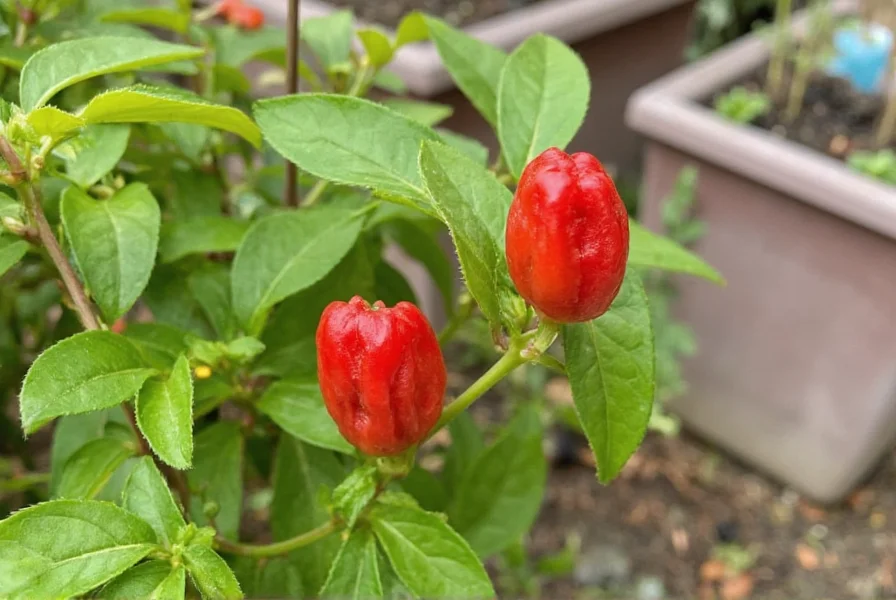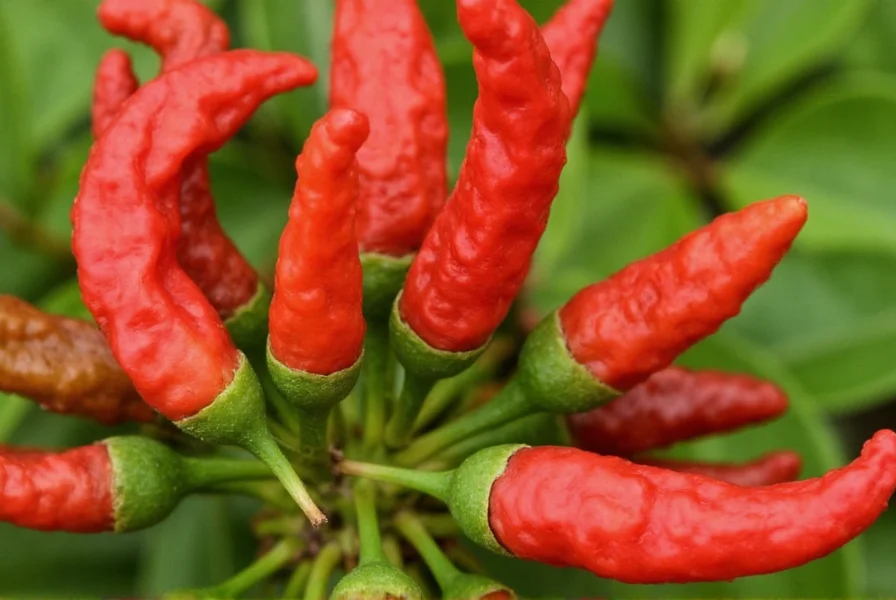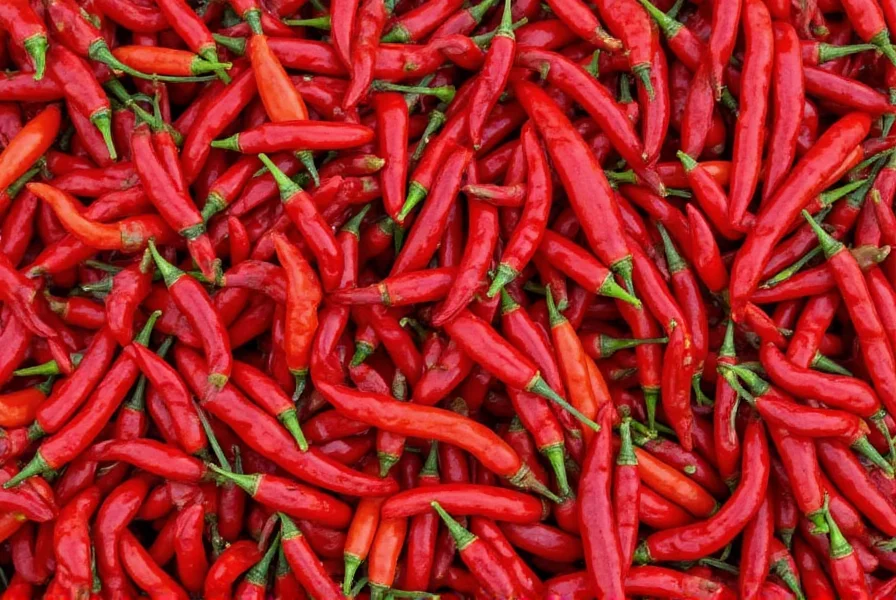The term 'Tasmanian chili outback' does not refer to an officially recognized chili pepper variety. This appears to be either a conflation of the Tasmanian Devil chili (a real but uncommon Australian cultivar) with general Australian outback references, or a misinterpretation of regional chili varieties. The closest authentic varieties include the Tasmanian Devil chili, which registers between 50,000-70,000 Scoville Heat Units (SHU), and certain Australian outback-inspired cultivars developed for arid conditions.
When searching for unique Australian chili varieties, many gardeners and culinary enthusiasts encounter confusion around regional names. The Tasmanian Devil chili represents the most legitimate connection to Tasmania, while true outback chili varieties originate from mainland Australia's arid regions. Understanding this distinction helps clarify what growers and cooks can realistically expect when seeking these peppers.
Understanding the Tasmanian Devil Chili
The Tasmanian Devil chili (Capsicum chinense) is the primary variety associated with Tasmania, despite the island's relatively cool climate being unconventional for hot peppers. This small-fruited chili features distinctive characteristics:
| Characteristic | Details |
|---|---|
| Heat Level | 50,000-70,000 SHU (similar to habanero) |
| Appearance | Small, wrinkled pods (1-2 inches), ripening from green to bright red |
| Flavor Profile | Fruity with citrus notes, followed by intense heat |
| Growing Season | Requires 90-100 days to maturity |
| Climate Adaptation | Performs better in containers in cooler Tasmanian climate |
Origin and Development History
Contrary to what the name suggests, the Tasmanian Devil chili wasn't originally developed in Tasmania. It emerged from Australian chili breeding programs that adapted Caribbean and Central American varieties to southern hemisphere conditions. Select growers in Tasmania began cultivating modified strains around 2010, taking advantage of the island's unique microclimates.
The confusion with "outback" likely stems from mainland Australian chili varieties developed specifically for arid conditions. True outback chili cultivars like the Australian Outback Gold and Red Centre Fire originate from central Australia's desert regions, not Tasmania. These varieties demonstrate remarkable drought tolerance and intense heat profiles developed through selective breeding.
Physical Characteristics and Growing Requirements
Tasmanian Devil chilies produce small, tapered pods with characteristic wrinkled skin. Unlike many hot peppers, they maintain productivity even in Tasmania's relatively cool summers when grown in protected environments. Gardeners seeking growing Tasmanian chili varieties in temperate climates should note these key requirements:
- Minimum 6-8 hours of direct sunlight daily
- Well-draining soil with pH between 6.0-6.8
- Consistent moisture without waterlogging
- Container growing recommended for temperature control
- Staking required as plants mature
These plants typically reach 2-3 feet in height and produce abundant fruit when properly cared for. The harvest window extends from late summer through autumn in Tasmania's growing season.

Culinary Applications and Flavor Profile
The Tasmanian Devil chili offers a complex flavor experience that distinguishes it from similar heat-level peppers. Its initial fruity, almost citrus-like flavor gives way to significant heat that builds gradually. Chefs specializing in Australian native ingredient cuisine value this variety for:
- Sauces and hot sauces where fruitiness balances heat
- Marinades for meats, particularly lamb and kangaroo
- Infused oils and vinegars
- Specialty salsas with native Australian ingredients
- Finishing pepper for gourmet dishes
Unlike many super-hot peppers, the Tasmanian Devil chili provides noticeable flavor beyond just heat, making it valuable for culinary applications where nuance matters. When dried, it develops deeper, smokier notes that work well in spice blends.
Comparison with Similar Australian Varieties
Understanding the differences between Tasmania-associated chilies and true outback varieties helps set realistic expectations. The following comparison clarifies key distinctions:
| Variety | Region | Heat Level | Primary Use |
|---|---|---|---|
| Tasmanian Devil | Tasmania (container-grown) | 50,000-70,000 SHU | Culinary applications requiring flavor complexity |
| Australian Outback Gold | Central Australia | 100,000-150,000 SHU | Hot sauces, extreme heat applications |
| Red Centre Fire | Northern Territory | 85,000-120,000 SHU | Traditional Aboriginal food preparation |
| Queensland Green | Queensland | 30,000-50,000 SHU | Fresh culinary applications |
Sourcing Authentic Varieties
For gardeners interested in growing authentic Tasmanian chili varieties, several considerations apply. True Tasmanian Devil chili seeds are available through specialty Australian seed companies, though they're often mislabeled online. Reputable sources include:
- Tasmanian Native Seeds (Launceston-based supplier)
- Australian Chilli Growers Association certified vendors
- Select nurseries in Tasmania's Huon Valley region
When purchasing seeds, look for proper botanical classification (Capsicum chinense) and avoid listings using the inaccurate "Tasmanian chili outback" terminology. Many overseas sellers misrepresent standard habanero varieties as Tasmanian specialties.

Common Misconceptions Clarified
The "Tasmanian chili outback" confusion stems from several factors in the specialty chili market. Tasmania's famous carnivorous marsupial, the Tasmanian Devil, inspired the legitimate chili variety's name, while "outback" references mainland Australia's interior. These geographical regions are distinct - Tasmania is an island state separated from mainland Australia by the Bass Strait.
Another factor is the growing popularity of Australian native food movements that incorporate both Tasmanian native ingredients and outback botanicals. Some culinary entrepreneurs have created fusion products using multiple regional ingredients, further blurring distinctions between actual plant varieties and marketing concepts.











 浙公网安备
33010002000092号
浙公网安备
33010002000092号 浙B2-20120091-4
浙B2-20120091-4